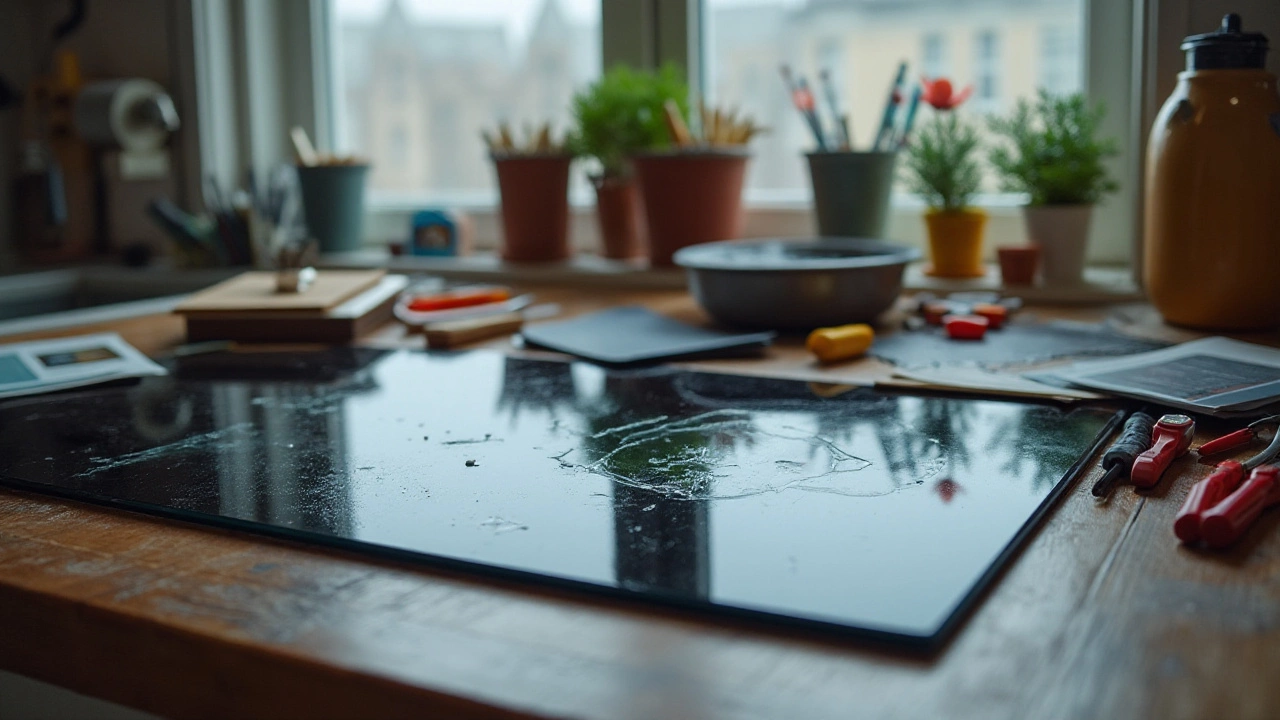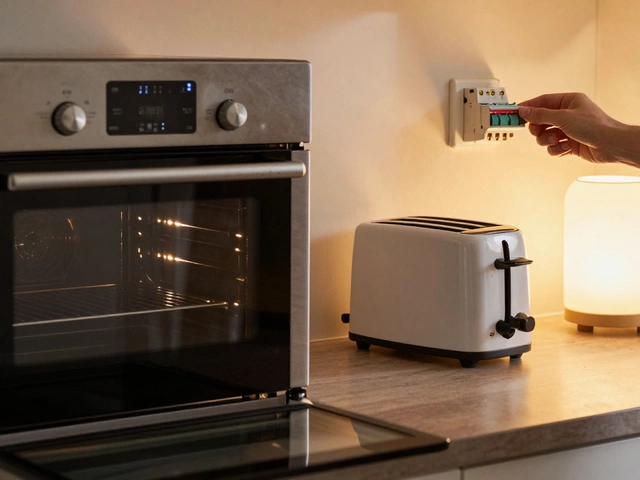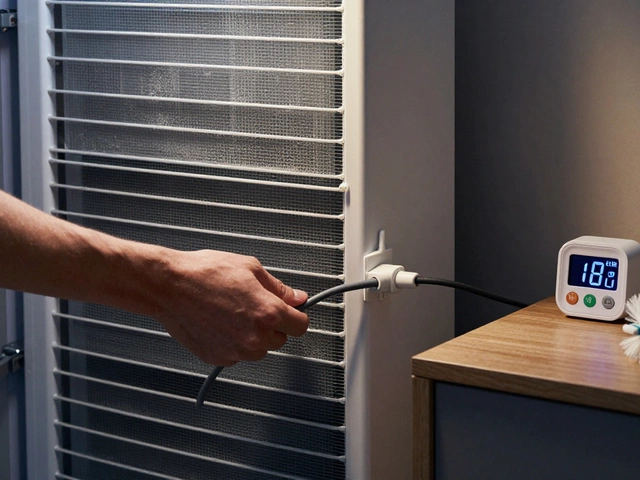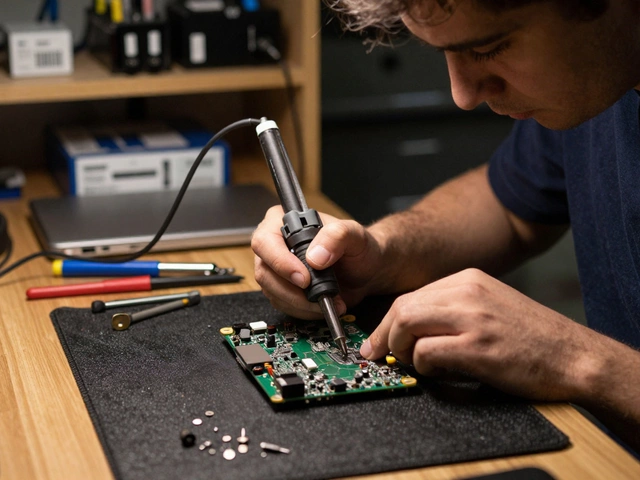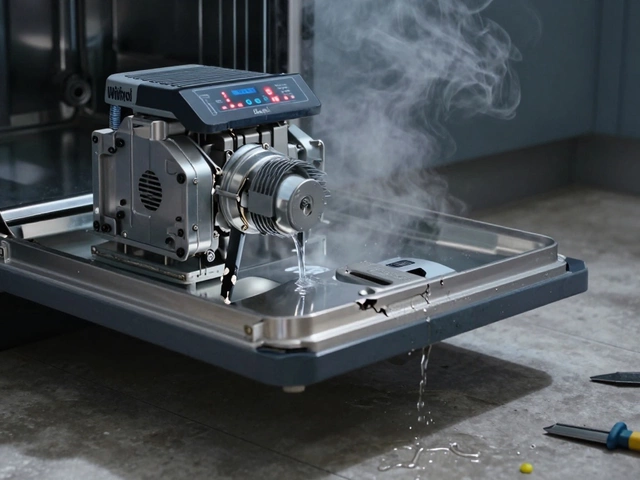Cracking or damaging your glass hob can be a frustrating experience, not just because it's an essential part of your kitchen, but also due to the unexpected costs involved. Navigating through repair options requires a bit of knowledge, and we're here to guide you through the process.
This article sheds light on the costs you can expect when repairing a glass hob, helping you understand where those numbers come from. We will explore factors that play a critical role in determining expenses and provide guidance on whether you should repair or replace your hob.
We also share practical tips for minor fixes that you might be able to handle on your own, and advice on finding a reliable technician if you need professional help. With some know-how, you can make the most cost-effective decision for your kitchen appliance. Let's delve into the essential information you need to tackle glass hob repairs confidently.
- Understanding Glass Hob Damage
- Factors Influencing Repair Costs
- Choosing Between Repair and Replacement
- DIY Fixes: What You Can Do
- Finding the Right Technician
- Top Tips to Extend Hob Life
Understanding Glass Hob Damage
Glass hobs are a modern kitchen staple, known for their sleek design and efficient functionality. However, like any piece of technology, they're not immune to damage. Understanding what goes wrong is the first step to ensuring longer-lasting use and keeping repair costs manageable. From simplest to most serious, there are several types of damage you might encounter.
One of the most common issues is scratches on the glass surface. While minor scuffs may not affect performance, they can accumulate over time and impact the aesthetic appeal of the hob. These are often caused by sliding heavy pots and pans instead of lifting them. Using abrasive cleaning materials can also contribute to scratches. By using heat-resistant protective mats or being mindful when handling cookware, you can significantly reduce this risk.
Cracks, on the other hand, can pose a more serious problem. Glass hobs are manufactured to withstand high temperatures, but abrupt changes in temperature or accidental impacts can cause the glass to crack. Even a small chip or crack can compromise safety and efficiency, leading to potential repair or replacement. It's important to address cracks promptly to avoid an escalation into costlier damage. According to the Home Appliance Manufacturers Association, sudden thermal shocks are responsible for over 60% of glass damage in the kitchen.
Electrical issues can also arise, particularly if there has been impact or excessive heat exposure. In electric hobs, damaged burners or malfunctioning control panels might occur. These issues can hinder the hob's ability to heat evenly or as desired. As the International Association of Certified Home Inspectors points out, electrical faults are often less visible than physical damage but can be just as risky if left unattended.
"The best way to tackle appliance repair is by understanding the root of the problem," says Linda Lawson, an expert in kitchen appliance maintenance. "With glass hobs, preventive measures and timely attention to small issues can save both time and money."
To prevent glass hob damage, regular maintenance and proper usage techniques are key. Familiarizing yourself with the manufacturer's guidelines and investing in high-quality cookware can make a significant difference. Glass is fragile, yet with a little care and attention, it's possible to keep your appliance looking and functioning like new for longer periods.
| Cause of Damage | Percentage of Cases |
|---|---|
| Scratches | 20% |
| Cracks from Impact | 40% |
| Sudden Thermal Shocks | 60% |
| Electrical Issues | 30% |
Factors Influencing Repair Costs
When it comes to getting your glass hob repair done, understanding the cost factors can make a world of difference. The first thing to look into is the type of damage that has occurred. A minor crack or surface scratch may only require simple repairs, possibly costing around $100 to $200. However, if the glass is shattered or there is damage to the internal components, you might be looking at costs upwards of $500. It's always best to assess the extent of the damage initially so you can set your budget right from the start. What really plays a large role in the pricing is not just the visible damage, but how it has affected the hob's efficiency and whether it might lead to other underlying issues.
Another crucial factor affecting hob fixing costs is the brand and model of your appliance. High-end or luxury brands often require specialized parts, which can significantly push up costs. These brands may also require technicians with specific expertise, adding another layer to the cost. Additionally, older models might also present challenges due to the unavailability of parts, making repairs pricier. It’s like searching for a needle in a haystack sometimes when parts are no longer in production. That’s why newer models, while potentially costly initially, often come with better support for repairs.
According to home repair expert, Lisa Greer, "The age of your appliance often dictates repair feasibility. Older models, especially over a decade old, can become financial burdens because the parts are scarce and technology has moved on."
Location is another aspect that can sway the repair costs widely. If you're in a large urban area, service costs tend to be higher due to the overheads these businesses face. In contrast, smaller towns may offer more competitive prices, but at a risk of longer wait times, especially for specialized repairs. But when location ties into costs, a common oversight is the transportation or home service fee. In urban settings, this can run from $50 to $100, but the longer distances in rural areas can ramp this up, offsetting any savings on cheaper rates. Keeping this in mind will help manage surprise expenses.
Lastly, the season could influence the pricing too. During the holiday season or peak summer months when replacements and renovations are high in demand, repair services might charge a premium. On the flip side, opting for off-peak times might land some discounts. Timing it right engages a strategy here, much like waiting for off-season sales. It's all about being conscious of when to strike for the best financial decision on your kitchen appliance repair.
Kitchen appliance repair isn't just about patching things up. It's an intricate calculation of knowing what's broken, exploring the implications of its brand and age, throughout the logistical and temporal tapestry of when and where the repair takes place. Being informed about these factors empowers you to make the best call for your kitchen’s lifeline without breaking your budget. With some thoughtful analysis, you'll have a clear direction on whether to repair, wait, or consider a replacement.
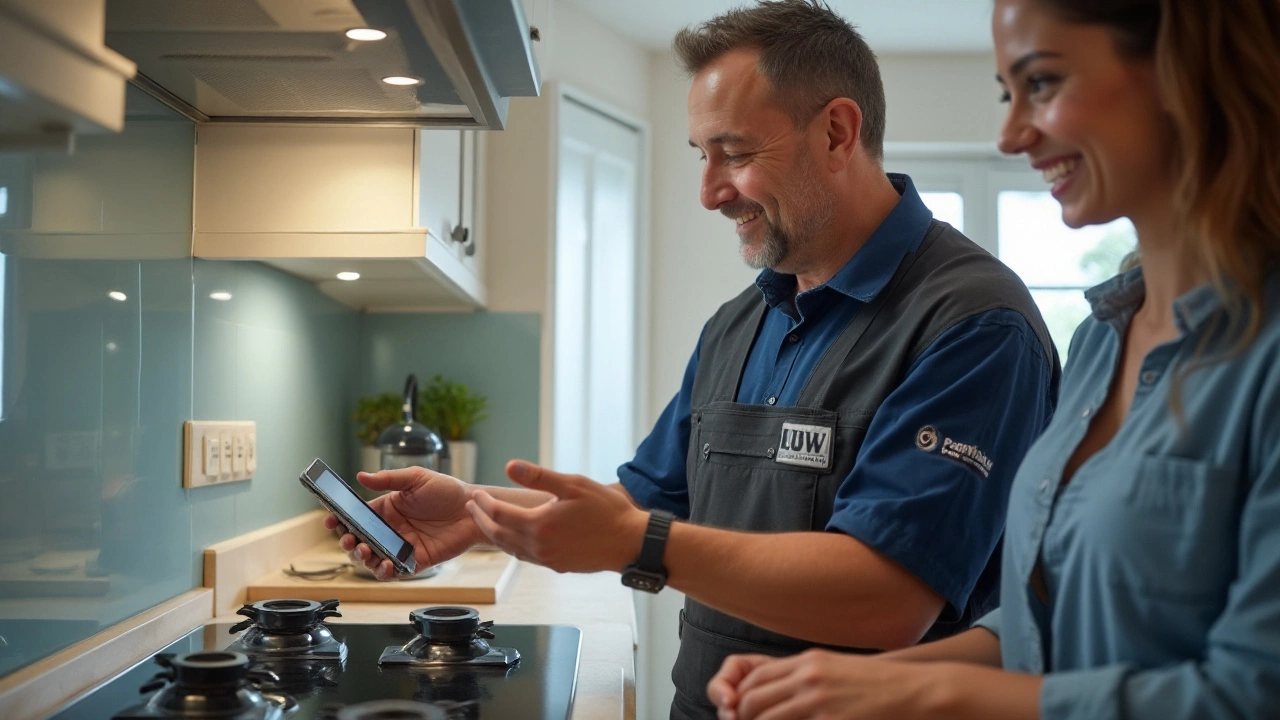
Choosing Between Repair and Replacement
When your beloved glass hob faces damage, the immediate question that surfaces is whether to repair or replace. It's a decision that must account for various factors, involving both practical considerations and cost assessments. To make an informed choice, one should consider the extent of damage, the age of the appliance, and budget constraints. An older model might not be worth the investment if repairs cost nearly as much as a new one. Often, manufacturers stop producing parts for older models, which can add to the repair bill. Replacing older hobs can sometimes lead to improved energy efficiency and savings in the long run, making it a worthy investment.
Let's talk about damage level. A small crack or a minor chip might be repairable if the issue hasn't compromised the hob's functionality. Such damages can often be fixed with professional attention, ensuring the hob performs as good as new. On the other hand, a severely cracked surface not only hinders the hob's efficiency but also poses safety hazards. Fires or electrocutions might result from trying to use a heavily damaged hob. Thus, when the severity escalates, replacement becomes not just an option, but a necessity. An important aspect influencing this decision is the manufacturer's warranty. If the hob is under warranty, you can save significant costs through a free or discounted repair service offered by the brand.
Then there's the financial angle. While a replacement might seem expensive upfront, sometimes it's actually more viable, particularly if you're facing frequent repairs. According to a study by the Consumer Electronics Association, the average lifespan of a glass hob is about 10 to 15 years. If your appliance is nearing the end of its lifecycle and repairs are accumulating, a new purchase could offer peace of mind and long-term cost savings. As the consumer economist Ann Smith says, "An appliance shouldn't just work; it should work well and cost-effectively." Investing in a new hob model could potentially save you hundreds in repair bills over the coming years.
Sometimes, it boils down to personal preference. Aesthetic appeal and new features offered by recent models might tempt you towards replacement. Energy efficiency in newer models can also contribute to lower electricity bills, further justifying the initial expense. To make a smart choice, consider estimates for both repair and replacement. Compare service quotes, and don't hesitate to seek advice from an experienced technician. Opt for trustworthy recommendations and reviews, ensuring you get value for your money, whether you decide to fix or renew your cooker. Making the right call depends a lot on evaluating these factors collectively, rather than in isolation. It's about aligning these considerations with your individual needs and preferences.
DIY Fixes: What You Can Do
Diving into DIY fixes for a glass hob can be both rewarding and cost-saving if you know where to start. The first step is always to assess the damage. Superficial scratches and minor chips might just be cosmetic issues, while deeper cracks could affect functionality. For most surface-level problems, there are a few straightforward solutions you can tackle without expert intervention. Cleaning the hob with a non-abrasive cleaner is often the first step—this will remove any residue and help you better assess the damage. Make sure you wait until your hob is completely cool before beginning any cleaning efforts, as sudden temperature changes can worsen existing issues. During cleaning, you might notice small scratches, which often only require a glass polishing cream. This type of cream can be lightly rubbed onto the hob's surface in circular motions, effectively minimizing the appearance of scratches over time.
If you're dealing with minor chips or cracks, you might consider a glass repair kit, available at most hardware stores. These kits typically include resin-based solutions that can seal small imperfections, preventing them from spreading. Begin the procedure by thoroughly cleaning the affected area and allowing it to dry completely. Apply the resin as instructed, usually ensuring it fills the chip or crack entirely. It's crucial to follow the kit's specific instructions for curing times, as this ensures the hob's surface regains its structural strength. Such repairs can extend the hob's lifespan, buying you time before a more costly repair or replacement is necessary. But remember, while these DIY fixes can be quite effective, they are best applied to minor issues; significant damage usually requires professional evaluation. This will help avoid potential risks of electric shocks or further deterioration.
"Homeowners are often surprised at how much they can actually fix on their own," says DIY expert Joe Pullen. "A little patience and the right tools go a long way in handling common appliance repairs."
Taking on digital hob issues, such as unresponsive touch controls, can be a different beast altogether. Before jumping to conclusions, conduct a basic check—ensure that your hob is receiving power, and try resetting the circuit breaker. Sometimes, power surges can cause temporary glitches, and a simple reset may solve the problem. For touch control malfunction, cleaning around the controls with a dry microfiber cloth can be beneficial. Dirt or grease can interfere with touch sensitivity, so keeping the panel clean can often resolve these problems. However, be cautious when dealing with any electrical components; if issues persist, calling a technician is advisable. Attempting DIY fixes on complex electrical faults might lead to more damage than repair.

Finding the Right Technician
When it comes to repairing a glass hob, ensuring you have the right technician on the job can save you time, money, and hassle. Locating a qualified professional who specializes in kitchen appliance repair can sometimes feel like finding a needle in a haystack, but it's certainly achievable with a few strategic steps. Start by researching and comparing technicians in your area, paying attention to their reputation. Online reviews and ratings are incredibly helpful, offering insight into the experiences that others have had with particular service providers. Websites like HomeAdvisor and Angie's List are invaluable resources for reading honest customer feedback.
Once you've narrowed your options, take the time to verify the credentials of each candidate. Look for technicians who carry the right certifications for appliance repair and are recognized by reputable industry associations. These certifications ensure that the technician has met the necessary training and knowledge standards to effectively handle your hob repair needs. Verification protects not only your appliance but also your investment, ensuring quality service.
The importance of communication cannot be overstated when working with a technician. During your initial consultations, gauge how effectively the technician can communicate with you about your repair needs. Do they provide clear explanations about what the repair entails, or are they using jargon that leaves you more confused than comforted? A reliable technician will be able to explain the problem and solution in terms that make sense, grounding their recommendations in logic and industry experience. Trust your instincts during these interactions—if something feels off, it's entirely within your rights to continue searching for the right fit.
Getting a second opinion and obtaining multiple quotes is another highly recommended approach. Different technicians may offer varying perspectives on the extent and cost of the repair, so it's valuable to hear more than one opinion before making a decision. While it's tempting to choose the cheapest offer, remember that a lower cost doesn't always equate to the best value. You're looking for a balance between quality service, fair pricing, and trustworthy professionals who provide a warranty or guarantee for their work, ensuring that if any issues arise, they can be promptly addressed without additional financial burden.
Eli Siegel, a consumer electronics expert, has been quoted saying,
"An informed choice made with thorough research often leads to satisfaction. Don't rush the process—select the technician who assures the highest quality of work."Embracing this mindset, you can approach the task of finding a technician with confidence, and knowing you've done due diligence. After all, it's always better to be prepared than to fall victim to rushed decisions.
Lastly, connect with the technician's previous clients if possible. Personal recommendations remain one of the most powerful endorsements you can get. Discussing past repairs directly with individuals who have been in your shoes can offer a transparent glimpse into what you can expect. If they were pleased with the outcome and willing to vouch for the professional's skills, you can take that as a positive sign.
Top Tips to Extend Hob Life
Ensuring the longevity of your glass hob doesn't just save money in potential repairs, but also keeps your kitchen functioning smoothly. Understanding how to maintain and care for this essential kitchen appliance is crucial. Regular maintenance begins with simple hygiene practices. Each time after cooking, allow the hob to cool slightly and then clean any spills or splatters. It's important to use non-abrasive cleaners and soft cloths to avoid scratching the surface. Harmful chemicals and rough materials might damage the glass, leading to costly repairs or even replacement.
Use the Correct Cookware
Another key factor in extending the life of your hob is using the right size and type of cookware. Pots and pans with flat bottoms ensure even heat distribution, preventing hotspots that might crack the glass. When selecting cookware, favor materials like stainless steel or cast iron, but ensure they are not too heavy. A heavy vessel can leave marks or stresses on the glass surface, so balancing durability with weight is crucial. Keep in mind that the base of your pots should match the size of the heating elements to promote efficiency and longevity of the appliance.
Preventing Impact Damage
Preventing accidental impacts is vital for preserving the glass hob. Be mindful and cautious when placing pots and utensils on the hob. A good practice is to lift and gently place items instead of sliding them across the surface. This habit not only protects the glass from scratches but also minimizes the risk of impact damage. Educating family members, especially teenagers and children who might assist in cooking, about these practices could avert early and unnecessary damage. Consider investing in hob protectors that act as a buffer against impacts and spills, extending the life of your precious kitchen ally.
Regular Check-ups
Incorporate routine check-ups in your kitchen care schedule. Inspect the hob frequently for any signs of wear and tear or minor cracks. Spots that seem trivial can develop into larger issues if neglected, so addressing them promptly is key. If you're unsure how to assess the condition, a professional technician could offer insights or preventive measures. Insurance or maintenance plans for appliances might cover periodic assessments, providing peace of mind.
"It’s worth investing in regular maintenance checks – a stitch in time saves nine," suggests David Johnson, a senior appliance technician with over 20 years of experience.
Mind Power Surges
The electrical aspect shouldn’t be overlooked when aiming to extend the life of your hob. Power surges can create system faults or overheat your cooking appliance. Protect your kitchen appliance by installing a surge protector or using a dedicated circuit. This not only safeguards the hob but also other sensitive electronics in your kitchen. Avoid overloading the circuit with multiple heavy-duty appliances running simultaneously. Simple adjustments to your kitchen power management can make a world of difference.
Incorporate Cooling Habits
Finally, always let your hob cool down naturally before attempting any cleaning or adjustments. Hurrying these processes could stress the glass, leading to damage or failure. The cooling process allows time for materials to return to a stable state before any further interaction. By incorporating these simple yet vital practices, you can ensure that your hob serves you efficiently and safely for years to come, circling back to the importance of being an informed and proactive appliance owner.
